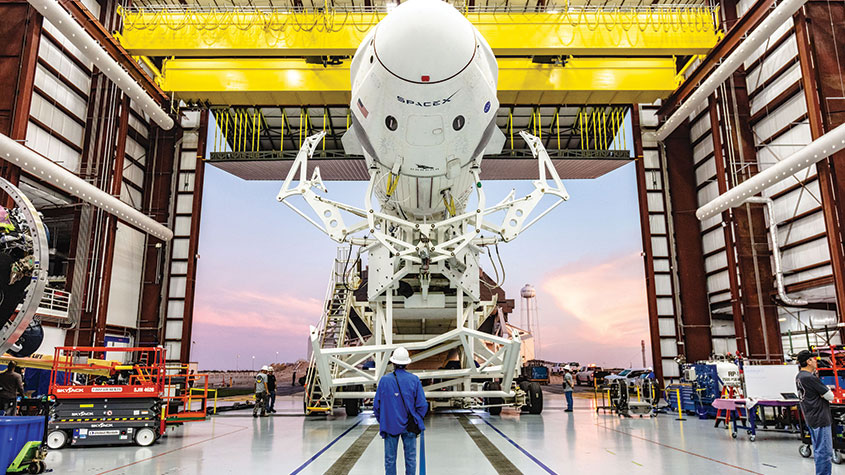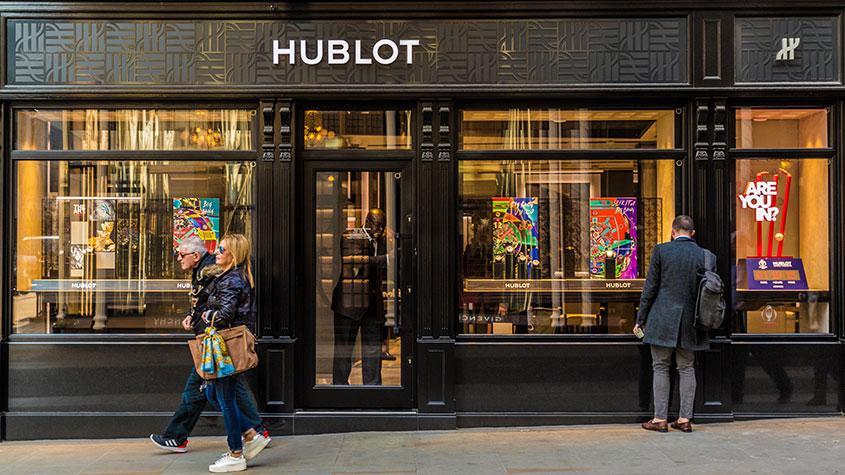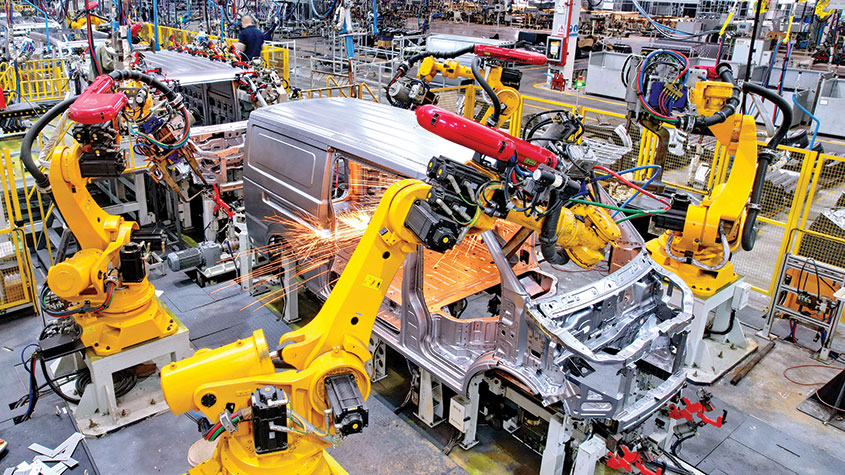Invest in helium, biotech, and UK small caps in 2019
We asked our contributors to choose their favourite investment ideas from around the world for this year and beyond. Here’s what they came up with.

Richard Beddard

XP Power (LSE: XPP) is top of my buy list. It manufactures power converters that do a similar job to those used in household appliances and home computers: they change electricity from the mains supply (alternating current) into the direct current used by machines. XP Power's converters are more sophisticated because they are used in complex industrial machinery and medical equipment. Failure of these machines would be expensive, perhaps even deadly, so the power converters are made to a high specification.
The big risk facing companies that supply industrial equipment and components is the capital equipment cycle. During recessions manufacturers reduce investment in new equipment to save costs, which affects the revenue and profitability of their suppliers. XP Power, however, has sustained high levels of profitability. This is partly because it would be expensive for a customer to substitute a converter once it is designed into a machine; partly because XP has been growing market share thanks to its small, efficient, reliable designs; and also a result of the company selling into stable sectors such as healthcare, as well as a variety of industrial markets that peak and trough at different times.
That does not mean XP Power will grow profits every year, but it has become the market leader in the US and Europe, which bodes well for its long-term prospects. With the largest technical sales force in the industry seeking a growing share of the business of its blue-chip customer base, and XP's control of design and manufacturing at its factories in China and Vietnam, rivals can do little to challenge it. The shares are available at the knock-down price of around £22, which values them at 16 times earnings on a debt-adjusted basis.
Subscribe to MoneyWeek
Subscribe to MoneyWeek today and get your first six magazine issues absolutely FREE

Sign up to Money Morning
Don't miss the latest investment and personal finances news, market analysis, plus money-saving tips with our free twice-daily newsletter
Don't miss the latest investment and personal finances news, market analysis, plus money-saving tips with our free twice-daily newsletter
Jonathan Compton

I am sure that 2019 will be a bad year for global investors. The reason is simple. Markets have underestimated the impact of ending quantitative easing (QE, or money printing). Since 2008 the major central banks have splurged more than $12trn into the global financial system, benefiting owners of assets such as shares, bonds and property. Now the tide has turned and governments will be competing to suck money out of markets. The good times are over.
I therefore want a company priced below its true value, that pays a decent dividend, has rising earnings and may be forced to give even more to its owners you and me. Barclays Bank (LSE: BARC) fits the bill.
Five-year performance has been dire, down 40% compared with gains of 32% and 8% in the FTSE Global 100 and UK All Share Indices respectively. Why? Because Barclays has suffered huge fines for historic fraudulent activity such as PPI mis-selling and multiple inquiries into murky affairs such as share-rigging. These are over, although doubts about CEO Jess Staley linger. Still, released from these historic drags, earnings should soar while simplifying the business will also improve profitability. Trading at about 65% of book value, the stock is cheap.
The current yield is just under 3%, but it should increase dramatically in 2019 to more than 4%. Earnings per share should rise to at least 24p, giving a prospective multiple of 6.6 times, and in the wings are activists such as Sherborne Investors urging more cash to be returned to shareholders. Tipping a £27bn company to rise in weak markets may seem eccentric but there's the fat dividend and every dog has its day.
Stephen Connolly

I plan to invest in emerging markets equities in 2019. They are bombed out and the earnings outlook is broadly attractive. This year's slide was due to US dollar strength and trade tensions. I will be cautious and allocate only 5%-7.5% of my portfolio to the asset class, but while it may not prove profitable in 2019, I'd be surprised not to make some decent returns over the medium term. I will buy the JP Morgan Emerging Markets Investment Trust (LSE: JMG) valued at more than £1bn and on a 12% discount. It is overweight Brazil, India and Indonesia and underweight China. Much comes down to the US dollar a weaker dollar should lift sentiment.
When in November it finally seemed to dawn on the Federal Reserve that strong US domestic growth earlier this year was the result of tax breaks and therefore unsustainable, its enthusiasm for dearer money cooled very quickly and it hinted it was close to the end of the interest-rate tightening cycle. That should subdue the dollar. Despite a few months of dtente expected in the US/China trade war, there's no guarantee there will be any resolution soon, although I believe both sides would prefer to get this over with as quickly as possible.
To put this investment in context, I am heavily invested in US equities and am comfortable with corporate America. My focus is long-term quality. Throughout 2018 I have been holding 25%-45% of my portfolio in cash and this can partly be used to fund emerging markets.
Rupert Foster

India will hold a general election in April and May 2019. The ruling BJP party has just lost three state elections but it looks very likely that on a national level it will get back in with a reduced majority. Narendra Modi, the BJP leader, has implemented enough structural reforms in his first term to be allowed another term. I think it highly likely that he will pick up the pace of reform. The "speed of change" is often the key variable that defines an emerging market's performance. The other two are a weak dollar and good investment flows. As the Fed moves to interest rate neutrality in the first half of 2019, we may well start to see some dollar weakness emerging much to the benefit of all emerging markets.
Meanwhile, year in, year out investors keep piling into India to the tune of $13bn in the last year. These money flows are mirrored by large corporate investments as overseas companies rush in. As reform continues this will only accelerate, since the main impediments to direct investment in India are the country's ossified and corrupt legal and bureaucratic structures. In addition, India is at the very early stage of emerging as an exporting nation, a trend that will only accelerate. A good way to play India is through a UK investment trust such as India Capital Growth (LSE: IGC), which focuses on promising mid caps. Trading at an 8%-9% discount to its net asset value (NAV), it looks great. Buy it in the first quarter ahead of the election and probable monetary easing.
Dominic Frisby

Every year some niche commodity seems to become a hot investment in the Canadian resource markets. This year it was marijuana. Last year it was cobalt. The year before that it was lithium. Whether it's rare earth metals, potash, graphite or uranium, the thing about these mini-bubbles, even if they turn out to be just that, is they all have a compelling underlying story.
The most compelling story at present is helium. It has a multitude of uses beyond balloons, most of them in tech. It's needed for high-capacity hard drives in data centres; in the production of barcode readers, computer chips, semiconductors, LCD panels and fibre-optic cable; as a refrigerant in cryogenics research; and as a coolant for nuclear reactors and MRI machines. Demand is rising while supply (Qatar and the US are the two biggest producers) is in decline. Roughly 15%-20% of global demand is met by the US selling off its national reserves, but within two years these will be fully liquidated. Cue the rush to find more.
There are four listed helium stocks in North America. Three have been disasters this year, all for internal company reasons. However, a new kid on the block, Desert Mountain Energy (TSX.V: DME) has staked out land in Arizona (now dubbed "the Saudi Arabia of helium"), raised money and is now preparing to drill in the spring. It's a tiny-cap energy play. Anything can happen. If the drilling works, you'll make a lot of money. If not, you'll lose it all.
Max King

With a US-led easing of monetary policy, a lower oil price and equity valuations somewhere between reasonable and cheap, I think 2019 will be a much better year for equity investors than 2018. In the performance tables, the UK competes with the eurozone for the wooden spoon, after 18 consecutive months of fund outflows totalling £7.4bn. For international investors, the UK remains their least popular destination.
Unusually, UK smaller companies have done even worse, with the Numis small-cap index returning -11% to the end of November, compared with -6.5% for the FTSE All Share. Over the previous five years, small caps outperformed by a compound 4%, broadly in line with the long-term average. Moreover, the average small-cap investment trust outperformed the Numis index by a compound 2.4%.
The glib explanation for the underperformance of UK smaller companies in 2018 is that they have far less exposure to overseas sales than larger companies and therefore are more exposed to Brexit. Yet smaller companies have also underperformed in the US and Europe, so it's a global phenomenon. Still, with bad news discounted and pessimism at an extreme, the UK market should do better in absolute and relative terms in 2019, and smaller companies should again outperform. If so, investors in small cap trusts could benefit from the UK market doing well, from smaller companies doing better, from small cap trusts outperforming and from discounts to net asset value narrowing. The following smaller companies trusts are all worth backing: Aberforth (LSE: ASL), BlackRock (LSE: BRSC), Invesco Perpetual (LSE: IPU), JP Morgan (LSE: JMI), Henderson (LSE: HSL) and Standard Life (LSE: SLS).
Lucy Macdonald

Investors have started to price in a peak in liquidity and the potential for decelerating growth: witness rising credit spreads, a flattening yield curve and the de-rating of cyclical stocks. This has meant an environment of lower returns with higher volatility. The reduction in liquidity driven by the US Federal Reserve and now the European Central Bank will remain the dominant headwind for asset markets over the next year. The business models of the FAANG stocks and the stability of the global trading regime are further concerns.
Trade fears may dissipate in the short term. However, the potential for friction between the two major economic powers remains in the longer term. Any alleviation of trade fears would benefit European and Asian stockmarkets relative to the US.
One stock we believe should perform relatively well in this challenging environment is Roche, which is emerging from a period of transition from its blockbuster oncology franchise, Avastin, Herceptin and Rituxan, where the threats from biosimilars appear to be well discounted in the valuation. It has secured a new leadership position with Merck in immuno-oncology and has a strong diversified pipeline with 17 new molecular entities in trials. Most interesting is their developing neuroscience portfolio addressing Huntington's, autism and Alzheimer's, while new drugs Ocrevus, Alecensa, Hemlibra and Venclexta have exceeded expectations. The balance sheet is strong and the stock yields more than 3%.
Steve Russell

Financial markets are gradually embarking on a regime change. Low inflation and low interest rates are gradually being eclipsed by higher inflation, higher interest rates and higher political risk. Against a background of rising inflation pressures and higher interest rates, the search for yield, driven by low or zero interest rates, is likely to be replaced by a search simply for the safe return of capital.
In many ways this backdrop is similar to the late 1960s, when a time of low inflation and concentrated stock-price appreciation came to an end as inflation returned to global markets. Eventually this leads to loss of real (inflation-adjusted) value even in government bonds and cash, the assets that initially appear to be safe havens in the transition.Central banks now face a dilemma. They are "damned if they do" raise interest rates, as growth and inflationary pressures would indicate, as this is likely to break markets, and eventually economies, that are addicted to low interest rates. At the same time central banks are equally "damned if they don't" raise rates, as this will reveal their inability to counteract rising inflationary pressures.
Unsurprisingly, recommending where to invest in this environment is rather difficult, as such conditions could see financial assets give back much of the gains made since the credit crisis.
Within equity markets, therefore, we are tempted to seek opportunities where investors are already discounting far from rosy outcomes, such as in the UK (owing to Brexit and political uncertainty) and Japan. Interesting stocks here are Tesco (LSE: TSCO) and BP (LSE: BP); Games Workshop (LSE: GAW), a maker of miniature war games; and software and computer services group FDM (LSE: FDM). The last two are potential mid-cap growth stocks currently suffering from the curse of being quoted or operating in the UK.
Other areas worth exploring could be historically capital-intensive industries such as chemicals and manufacturing, where low valuations and expectations are matched by low levels of recent capital investment, creating fertile ground for surprising output-price increases. US chemicals multinational DowDuPont is a case in point (NYSE: DWDP). While US equities remain the only asset class in positive territory this year, we are cautious over the outlook for a market where corporate credit has reached unprecedented levels and share buybacks appear to be the only remaining net source of demand for stocks. One area that may be interesting is that of media content. So Walt Disney (NYSE: DIS), with its impressive collection of film and TV brands, and French media conglomerate Vivendi (Paris: VIV) look attractive to us, especially compared with the likes of Netflix, which is spending vast amounts of cash that it does not have to create just such content.
David Stevenson
There's a decent chance that we are entering what is called a new volatility regime in investing. This sounds terribly jargon-heavy, but the idea is simple. Markets have become more turbulent and the general (bullish) sense of direction has broken down. On some days this means that investors are skittish, on others they are more optimistic.
In this new environment, measures such as the Vix which tracks the ups and downs of the benchmark S&P 500 index tend to tick up. Because the Vix measures volatility, which reflects nervousness, it is also known as the "fear gauge". In this environment it will often move consistently above 20. This new regime might resolve itself in weeks, months or possibly even years. The market could subsequently regain its confidence and start trending upwards or it could lunge into a proper crisis. But whatever happens next, it is reasonable to expect more turbulence.
That could be good news for the spread-betting businesses, a core component of the UK financials sector. The biggest and best operator is IG Index but I find myself watching the share price of Plus500 (LSE: PLUS) instead I regard it as the brash upstart whose shares are now dirt cheap. Most of the big spreadbetters have seen their share price hit hard by a tougher regulatory environment (much deserved in my view) which is forcing them to concentrate on a smaller core of more professional clients. These hugely successful businesses have also been forced to focus on global expansion, and in IG's case new products such as robo-portfolios and ordinary share dealing. One last ferocious headwind, relevant to Plus500 in particular, is the bear market in cryptos. Plus500 had built up a valuable franchise as a way of playing the relentless march upwards in the price of bitcoin and Ethereum. That trade has now evaporated and Plus500's share price has crashed back.
But don't lose sight of the fact that spread-betters are a brilliant hedge on market volatility they make money in a more turbulent market. And Plus500 is a fearsome digital marketing machine whose shares are now lowly valued the forward PE is probably around five to six and the dividend could easily stay in double digits in percentage terms for the next few years. Remember that above all, Plus500 is still an online cash machine. Overall I'd be an enthusiastic buyer if the share price dipped below £12.50 a share, mainly as a hedge on this new market volatility regime I have described.
Mike Tubbs

Biotechnology will be the major growth technology of this century. It is spearheading a new generation of drugs based on antibodies and immunotherapies and it has also led the development of gene and stem-cell therapies. It is also leading to revolutions in crop- and farm-animal genetics. Last year I recommended a drug discovery biotech, Vertex Pharmaceuticals, which at the time of writing is up 9.7% on the year in US dollars (and up 18.7% in sterling while the FTSE100 is down 12%).
This year I am staying with biotechnology. However, I am recommending a "picks and shovels" play. This term stems from the California gold rush, and alludes to the strategy of buying shares in suppliers to an industry rather than the sector itself. This can shield investors from swings in sentiment towards the sector. Given that markets are far more volatile now than last year, this seems a prudent approach.
I am recommending a company called Abcam (Aim: ABC). Abcam is the global leader in primary antibodies used for biotech research and in the digital marketing and e-commerce technology needed to speed them to researchers worldwide. It is also expanding in related technologies such as proteins, reagents and kits for biotech experiments that markedly reduce preparation time for treatments.
Abcam is called the "Amazon of antibodies" because its superb website sells not only its own antibodies developed in-house (such as its proprietary RabMAb range) but also those from partner organisations. It delivers its products to 130 countries. Furthermore, every antibody or product listed on the site is quality-controlled, with a detailed technical datasheet to give its research customers full confidence in the item.
Abcam is a substantial company with 2018 revenues of £233m and market cap of £2.2bn. It targets revenue growth of 20-25% per year. The share price is currently around 1,060p, giving a trailing price/earnings ratio (P/E) of 35 using the 30.2p earnings-per-share (EPS) figure for the year to the end of last June. Operating profits rose by 25% last year and brokers estimate a 19% rise for 2019 so EPS should rise substantially, giving a higher price and/or lower P/E. Total dividends of 12p were declared in 2018 for a yield of 1.1%. The shares are down 30% from their peak of 1,539p in early September.
John Stepek

This time last year I tipped gold-mining stocks, via the VanEck Vectors Junior Gold Miners exchange-traded fund (LSE: GDXJ). Frankly, it's been an appalling tip on a one-year basis down 7.6% from 12 January (when the tip came out) to 19 December, and that's pricing in the favourable currency effect of owning it as a sterling investor (it's denominated in dollars, which the pound has fallen against this year). However, I'd hang on to it, for reasons that my colleague Andrew goes into below.
For this year's tip, I'm going for something rather more staid than junior gold miners UK clothing retailer Next (LSE: NXT). The headlines are already yelling about a bloodbath on the high street. That's not at all unusual for this time of year. I don't recall a festive season that hasn't involved endless news stories about how awful business has been. But throw in confusion over Brexit, a nasty profit warning from online "fast-fashion" group Asos, and the more general market downturn, and we're at full-on panic stations now. Little wonder. Fashion is a fickle industry. Tastes change. The weather is a constant source of volatility, and the industry is still in the middle of rampant, internet-created disruption.
So why am I buying Next (indeed, I already own it)? For two reasons. One, it's well-managed. In a volatile industry such as this one, that's the best way to choose between companies. Indeed, it's the key reason I'd favour Next over its nearest high street rival (in clothing terms), Marks & Spencer. M&S has suffered from mediocre, unfocused management for several decades now, whereas Next is the polar opposite. Second, it's cheap. The dividend yield is about 3.7%, it trades on a price/earnings multiple of around ten, and the balance sheet is sound. I don't expect it to shoot the lights out. But if Brexit goes even a little better than expected, then Next will benefit from rallying sentiment towards British assets. If it doesn't, Next is at least a survivor.
Andrew Van Sickle

We could be heading back to the 1970s in 2019 though not in the way you might expect. My prediction is not Jeremy Corbyn but stagflation. Consider the rapidly mounting evidence. On the one hand, inflation is stirring now that tight labour markets are finally delivering serious wage inflation. In Britain, wages excluding bonuses grew by an annual 3.3% in the three months to October, the fastest pace since 2008.
Spain has just announced the biggest hike in the minimum wage in more than 40 years. Deutsche Bank, pointing to a gauge of US hourly earnings showing a 3.1% year-on-year increase, says that if the Federal Reserve ignores this trend, "we run the risk of returning to unanchored wage inflation".
Spoiler alert: the Fed will ignore the trend because it's looking the other way. The US economy, like the eurozone and emerging markets, is slowing down. Global GDP growth has "hit a major air pocket", says UBS, which reckons it has slowed from 4.5% at the start of 2018 to about 3% now.
Slowing growth plus rising inflation equals stagflation. The 1970s showed starkly what that does to asset prices. Equities do better than bonds, but once inflation really gets going (around 4%-5%) companies find it harder and harder to pass on price rises and the prospect of higher eventual interest rates to squeeze out inflation lowers valuations.
In these circumstances, big multinationals boasting decent cash piles for dividends and providing essentials such as petrol and food will probably outperform other equities. But the best bet is gold. The yellow metal has risen twice as fast as consumer prices in the US since the end of the gold standard, as WirtschaftsWoche points out. And it's not just a reliable store of value: bad news tends to give it a big boost. Stagflation is very bad news indeed, especially because it is the last thing most investors expect. A gold-backed exchange-traded fund tracking the gold spot price is a good way in: consider ETFS Physical Gold (LSE: PHAU).
Merryn Somerset Webb

The market volatility of 2018 has produced all sorts of interesting discounts in the investment-trust sector you can find many once well-loved ones trading at 10% discounts to net asset value (NAV), for example. Look at some of the less well known ones and there is even more bang for your buck.
One for niche investors to look at might be tiny (market cap £54m) Menhaden (LSE: MHN). It listed in July 2015 with a plan to focus on investments in firms using resources efficiently as well as in renewables firms (both listed and private).
Things started badly with some disastrous renewable energy investments. However the trust has pulled back from the brink. A new chief investment officer joined in March 2016 and refocused the already concentrated portfolio (there are fewer than 20 holdings, around half listed) towards value investments with the same thematic bias. Since then the NAV has risen by 16% but the share price fallen more like 12%, leaving the shares hovering on a discount of 25%-30% to NAV.
This is interesting right now for one particular reason the trust has a continuation vote coming up in May 2020. If the discount doesn't narrow, investors could force the fund to close down with a view to getting paid out something close to NAV in cash. Menhaden is hard to trade and fairly expensive (ongoing charges are just over 2%). But it's also interesting. One for the brave and patient.
The rest of us might also use the return of discounts to look to Bruce Stout's Murray International Trust (LSE: MYI). This has long been one of our favourite funds with proper emerging market exposure , and the excellence of its manager has often had it trading on a premium. No more. At the moment it is on a 4%-5% discount. If you think there is a reasonable chance that emerging markets are oversold and will bounce nicely if (when?) the Federal Reserve softens its interest-rate policy, this is an excellent opportunity to buy into Stout's stockpicking skills.
Cris Sholto Heaton

I try not to spend too much time fretting about the overall direction of the market. But the recent behaviour of almost every stock in my portfolio and on my watchlist makes me suspect that anything one buys right now is more likely to go down than up over the next year.
So I favour looking for good-quality stocks that have already fallen back to the point where valuation may offer a bit of a cushion against a further downturn (although they would still not escape a full bear market unscathed). Paying up for growth is perilous in this climate, as is buying low-quality stocks because they look cheap.
That kind of value is still scarce, but there are a few European industrials that are starting to look more attractive. I suggest having a look at TKH Group (Amsterdam: TWEKA), a mid-cap industrial-technology firm that focuses on communications infrastructure, manufacturing automation, and building security and monitoring. None of that sounds glamorous, but all these markets should offer long-term growth potential. TKH trades on a consensus forecast price/earnings ratio for 2018 of 15.5 and a dividend yield of 2.9% (UK investors will lose 15% of that to Dutch withholding tax) not outright cheap, but fair.
My suggestion last year was Tiger Brands, a South African consumer-staples firm, which has performed very badly. Sluggish consumer spending and rising costs due to the weak rand played a part, but far worse was the handling of a listeriosis outbreak traced to its processed-meat business, which lead to the death of roughly 200 people. I've been giving the firm time to show it's getting back on track, but I'm rapidly losing faith in both management and strategy. The stock is likely to exit my portfolio in my new year review.
Get the latest financial news, insights and expert analysis from our award-winning MoneyWeek team, to help you understand what really matters when it comes to your finances.
MoneyWeek is written by a team of experienced and award-winning journalists, plus expert columnists. As well as daily digital news and features, MoneyWeek also publishes a weekly magazine, covering investing and personal finance. From share tips, pensions, gold to practical investment tips - we provide a round-up to help you make money and keep it.
-
 Dunelm has done well and looks inexpensive – should you invest?
Dunelm has done well and looks inexpensive – should you invest?Home furnishings retailer Dunelm has proved resilient and looks inexpensive
-
 QXO: a compelling opportunity in the building materials industry
QXO: a compelling opportunity in the building materials industryOpinion The boss of QXO knows how to make a few billion dollars, and aims to repeat the trick. Investors would be wise to back him, says Jamie Ward
-
 Invest in space: the final frontier for investors
Invest in space: the final frontier for investorsCover Story Matthew Partridge takes a look at how to invest in space, and explores the top stocks to buy to build exposure to this rapidly expanding sector.
-
 5 of the world’s best stocks
5 of the world’s best stocksCover Story Here are five of the world’s best stocks according to Rupert Hargreaves. He believes all of these businesses have unique advantages that will help them grow.
-
 The best British tech stocks from a thriving sector
The best British tech stocks from a thriving sectorCover Story Move over, Silicon Valley. Over the past two decades the UK has become one of the main global hubs for tech start-ups. Matthew Partridge explains why, and highlights the most promising investments.
-
 How to invest in videogames – a Great British success story
How to invest in videogames – a Great British success storyCover Story The pandemic gave the videogame sector a big boost, and that strong growth will endure. Bruce Packard provides an overview of the global outlook and assesses the four key UK-listed gaming firms.
-
 How to invest in smart factories as the “fourth industrial revolution” arrives
How to invest in smart factories as the “fourth industrial revolution” arrivesCover Story Exciting new technologies and trends are coming together to change the face of manufacturing. Matthew Partridge looks at the companies that will drive the fourth industrial revolution.
-
 Why now is a good time to buy diamond miners
Why now is a good time to buy diamond minersCover Story Demand for the gems is set to outstrip supply, making it a good time to buy miners, says David J. Stevenson.
-
 How to invest in carbon capture and storage in the quest for net zero emissions
How to invest in carbon capture and storage in the quest for net zero emissionsCover Story Switching to green energy is unlikely to be enough to get the world to “net zero”. Carbon capture and storage (CCS) technologies will also play a key role. Matthew Partridge explores the sector and picks the best ways to invest.
-
 Why the UK's investment prospects are improving
Why the UK's investment prospects are improvingCover Story The outlook for the UK has darkened since last year, but the chancellor’s £15bn energy relief package should mean recession is avoided, says John Stepek.

